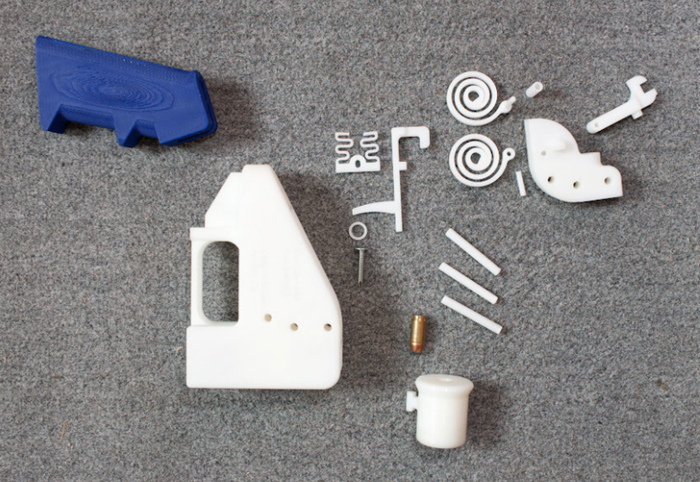Remember the blog I wrote almost exactly one year ago about a headline in Manufacturing & Technology News that caught my eye: "Government Is Pushing Full Speed Ahead On Additive Manufacturing." The editorial by Richard A.
May 13, 2013
Remember the blog I wrote almost exactly one year ago about a headline in Manufacturing & Technology News that caught my eye: "Government Is Pushing Full Speed Ahead On Additive Manufacturing." The editorial by Richard A. McCormack, editor of Manufacturing & Technology News, discussed "the creation of a major new pilot manufacturing center that will focus on the development and implementation of 'additive manufacturing' technologies." It was the 'buzz' at last year's RAPID 2012 conference.
3D printed plastic gun
According to McCormack's information, the "center is expected to be funded at $45 million with money that has already been appropriated by Congress. Of the total, $30 million will come from the Departments of Energy and Defense, of which up to $15 million will be used to buy equipment. Another $10 million will be provided by the DOD ManTech program. The National Institute of Standards and Technology (NIST) will contribute $5 million. NASA is also involved."
Last year, the government opened the first of these tech institutes in Youngstown, OH, the National Additive Manufacturing Innovation Institute, the first of what an article in today's Wall Street Journal (White House Makes a Push for Tech Research) says will eventually be 15 such institutes, if the Administration can get the $1 billion in funding.
It seems that 3D printing (additive manufacturing) was high on the list of technologies the government wants to develop. And while the DOD might have been gung-ho for this new additive manufacturing center last year, this year it's at odds with Cody Wilson, the young man I wrote about two days ago, who posted the blueprints for making a printed ABS handgun.
Wilson announced that at the request of the Department of Defense Trade Controls, he has removed the CAD prints from his organization's website after some 100,000 downloads. "#DEFCAD is going dark at the request of the SOD Dept of Defense Trade Controls," Wilson tweeted. "Some shapes are more dangerous than others."
I sought comments from members of the 3D Additive Manufacturing Linkedin group to which I belong, and had only a few replies, and most of those privately. The feedback I did get matched many of the comments on the Huffington Post news site, mostly to the effect that there are certainly cheaper ways to make/obtain guns.
One comment noted that "real" guns "will always be much cheaper and easier to obtain" than these plastic additive manufactured ones. A few pointed out that someone with basic machine shop skills and a few metal working instruments can make a gun. Additionally, I did learn that the manufacture of a gun requires compliance with the National Firearms Act.
Additionally, according to the State Department website, the government "controls exports of sensitive equipment, software and technology as a means to promote our national security interests and foreign policy objectives." With the CAD blueprints out on the Internet, any foreign power can download these prints to make the Liberator guns, which the government sees as a potential threat to national security.
So the government wants to be in the business of promoting 3D printing technology - and is spending a lot of our tax money (and probably a few bucks borrowed from China) to do so, but also wants to control what can be put into the public domain and actually manufactured.
As I pointed out a few days ago, any technology or product can be used for good purposes or for ill intent - that's all in the mind of the user. Who should determine what technology can be used for? Can 3D printing technology only be used for printing hands, ears, complex jet engine parts? And if we restrict the use of these technologies, will that also inhibit innovation and entrepreneurship?
There are always more questions than answers, and for every answer there will be more questions. At least it will give RAPID 2013 something to 'buzz' about at this year's conference.
About the Author(s)
You May Also Like




